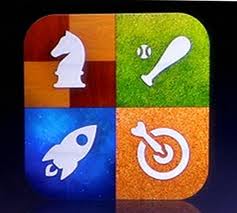Small side-note first, Vizati is now available for the Super Nintendo, more info.
For my third idevblogaday post I’m going to talk about Game Center.
Game Center was released only a couple months ago (September or so) but already tons of applications are using it and even more, players ask for it.
It’s a way to track achievements, leader boards etc. Unfortunately It’s only available from iOS 4.1+, so some compatibility check has to be done.
Let’s start by checking if the device is able to use Game Center
- (BOOL)isGameCenterAvailable
{
// Check for presence of GKLocalPlayer API.
Class gcClass = (NSClassFromString(@"GKLocalPlayer"));
// The device must be running running iOS 4.1 or later.
NSString *reqSysVer = @"4.1";
// Get Current sys version
NSString *currSysVer = [[UIDevice currentDevice] systemVersion];
// Compare both versions
BOOL osVersionSupported = ([currSysVer compare:reqSysVer options:NSNumericSearch] != NSOrderedAscending);
// Final Check
return (gcClass && osVersionSupported);
}
Now we can use it to check if it’s available before actually using it. I would advise you to make this check only once at start and store it somewhere. Using this function intensively is not recommended.
So to init Game Center:
- (void)initGameCenter {
// Only continue if Game Center is available on this device
if ([self isGameCenterAvailable])
{
// Authenticate the local player
[self gameCenterAuthenticate];
// Register the GKPlayerAuthenticationDidChangeNotificationName notification
NSNotificationCenter *nc = [NSNotificationCenter defaultCenter];
[nc addObserver: self
selector:@selector(gameCenterAuthenticationChanged)
name:GKPlayerAuthenticationDidChangeNotificationName
object:nil];
}
}
Noticed the gameCenterAuthenticate and gameCenterAuthenticationChanged we registered?
First our registered function will check if the player has logged in, if not it will prompt it.
- (void)gameCenterAuthenticate {
// Authenticate the local user
if([GKLocalPlayer localPlayer].authenticated == NO)
{
[[GKLocalPlayer localPlayer] authenticateWithCompletionHandler:^(NSError *error)
{
if(error == nil)
{
// Game Center Active and Player Sucessfully logged in
// Store in your global vars that Game Center is Active
}
else
{
// Player Is not Logged In, so proceed as not having Game Center
// Store in your global vars that Game Center is INACTIVE
}
}];
}
}
- (void)gameCenterAuthenticationChanged {
[self gameCenterAuthenticate]; // In case the player makes logout we prompt it with login again.
}
To submit something to Game Center:
std::string category = "top_score"; // Identifier you registered for your App with Apple, check iTunesConnect
int value = 1000; // Let's say your player made 1000 points
NSString *cat = [[NSString alloc] initWithUTF8String:category.c_str()];
// Report the high score to Game Center
GKScore *scoreReporter = [[[GKScore alloc] initWithCategory:cat] autorelease];
scoreReporter.value = value;
[scoreReporter reportScoreWithCompletionHandler:^(NSError *error) {
if (error == nil) {
NSLog(@"Game Center - High score successfully sent");
}
}];
And that’s it. There’s tons of other stuff like achievements, online playing etc. But this should get you started.
